Learning a foreign language is a challenge for anyone. Japanese, in particular, has its own unique writing system, and the associated pronunciation and grammar rules can be a headache for Japanese language learners. In this blog, I want to help you learn Japanese by providing information on the differences between Japanese and English and their characteristics from the perspective of a Japanese-speaking English learner.
Three Forms of Characters
Firstly, the Japanese language consists of three different scripts. These are hiragana, katakana, and kanji. Unlike English, which can only be represented by the 26-character alphabet, both hiragana and katakana have 46 basic characters, with a few variations. When it comes to kanji, there are thousands. It might feel overwhelming. Don’t worry. Even Japanese people don’t know them all.
Before diving into some of the other differences, let’s see a brief history of how these three writing systems came to be.
Origin
Kanji is said to have been introduced to Japan from China around the 6th century. However, it was difficult to express the complex sounds of Japanese using only kanji. Hiragana evolved during the Heian period (794-1185) as a simplified form of kanji and it was widely used in literature by women. Katakana also emerged in the Heian period, but unlike hiragana, it was abstracted from parts of kanji. Monks studying Chinese Buddhist texts simplified kanji into katakana shorthand to make it easier to read and memorize.
The forms of hiragana look round and curly, whereas those of katakana look blockish and sharp.
Here is a chart showing how hiragana is derived from kanji.

Example of hiragana origin:
安(kanji, meaning “peace”)
→ あ(hiragana for the sound “a”)
Here is a chart showing how katakana is derived from kanji.
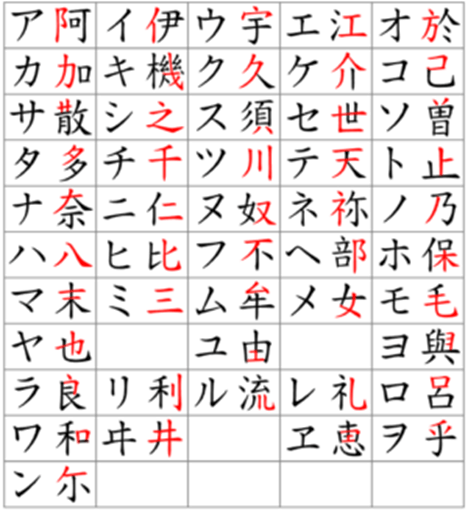
Example of katakana origin:
加 (kanji, meaning “add”)
→ カ (katakana for the sound “ka”).
Simply put, hiragana and katakana represent sounds, while kanji characters represent meanings.
Almost all written Japanese sentences contain kanji, hiragana, and katakana. This mixture of scripts makes the Japanese writing system unique and challenging.
Specific Functions
Hiragana and katakana are two different ways to write the same set of 46 sounds. Hiragana are used primarily for native Japanese words and grammatical elements (particles, verb endings, etc.), while katakana are used for loanwords, foreign names, onomatopoeia, and emphasis.
Reading System
As an English language learner, I wonder why the English written alphabet doesn’t match the phonetic alphabet. When I come across an unfamiliar word, especially people’s names and technical terms, I don’t know how to read it. In contrast, in Japanese hiragana and katakana, each character represents a specific sound, so once you master them, you will be able to pronounce all Japanese words easily.
Hiragana are used as a guide to show how kanji are pronounced because kanji have several different readings. Hiragana is written as furigana in small letters beside or above kanji. Also, when you forget how to write a word in kanji, hiragana can come in handy as a substitute.
Tategaki (たてがき) and Yokogaki (よこがき)
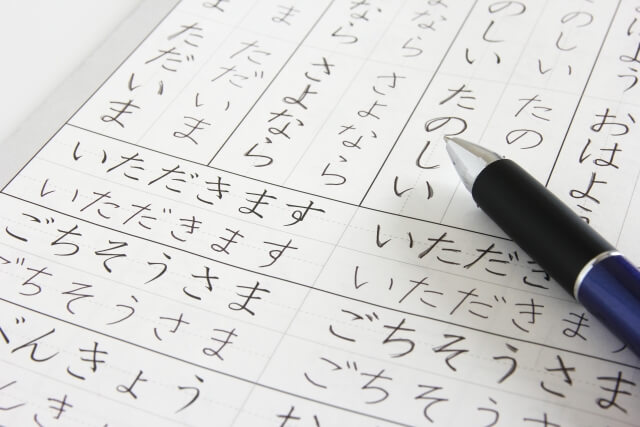
Japanese is one of the languages that can be written vertically (tategaki) and horizontally (yokogaki). As you can see in newspapers, Japanese language textbooks, and literary works, vertical writing is the basic form. Currently, however, both are used together, and horizontal writing can also be found in some books, picture books, or magazines.
When reading a vertical script, you read the text from top to bottom and the lines from right to left. Japanese books therefore open from the right.
When you go to a bookshop, you might think Japanese books are easy to find, but English titles are hard to read unless you tilt your head sideways.
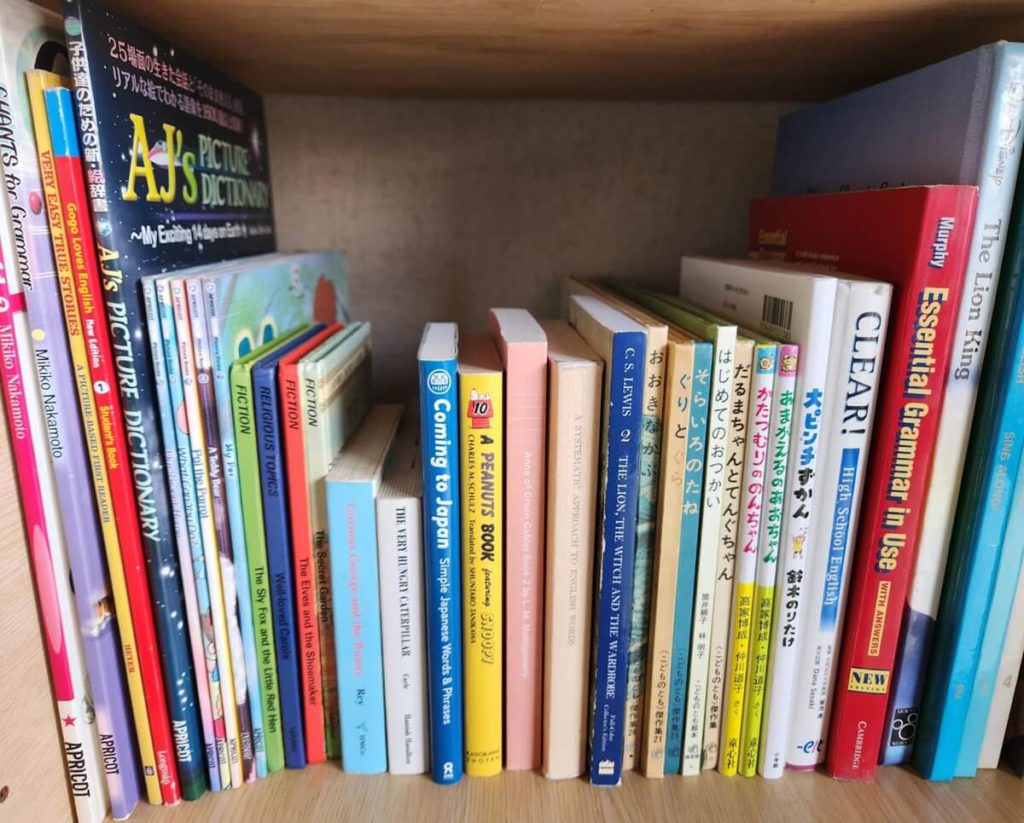
No Spaces between Words
Another feature is that, unlike English, Japanese is written without spaces. In primary textbooks for Japanese learners, it is written with spaces to make it easier to read, but formally it is only punctuated. Look at the pictures below. The first image shows sentences from the Japanese textbook for the first year of elementary school, and the bottom is from the third year.
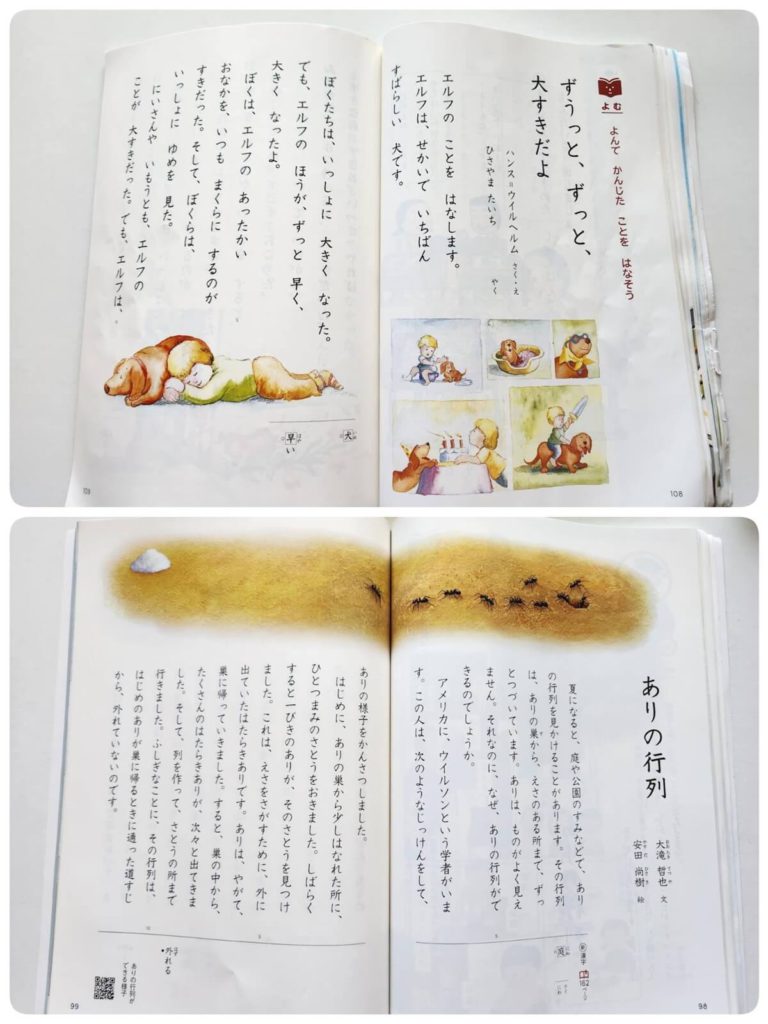
As you can see above, there are spaces for the students in grade one but not in grade three. As a matter of fact, texts written entirely in hiragana are difficult even for Japanese people to read. Kanji can greatly help when you read Japanese texts without spaces.
Here is a good example:
(1) ははははいしゃです。(written in all hiragana)
(2) 母は歯医者です。(written in kanji and hiragana)
(3) My mother is a dentist. (written in English)
(4) Mymotherisadentist. (written in English without spaces)
Comparing example sentences (1) and (2), in (2) it is clearer and easier to identify the meaning. Kanji can be followed by hiragana, which creates a group of word meanings. The distinct shapes of these scripts aid in identifying word boundaries.
(3) is the standard English writing; however, (4) is illegible. Sometimes, Japanese students who have just started to write English produce this kind of writing.
Rōmaji
Last but not least, I’d like to tell you about another form of character used in Japan. It is called rōmaji. It is a method of writing Japanese words using the Roman alphabet. Students in elementary school learn to write their names in rōmaji.
Rōmaji is used to make Japanese text understandable to non-Japanese speakers who cannot read kanji or kana scripts. This is commonly used in Japan for road signs, public transportation, company names, passports, or textbooks for learning Japanese.
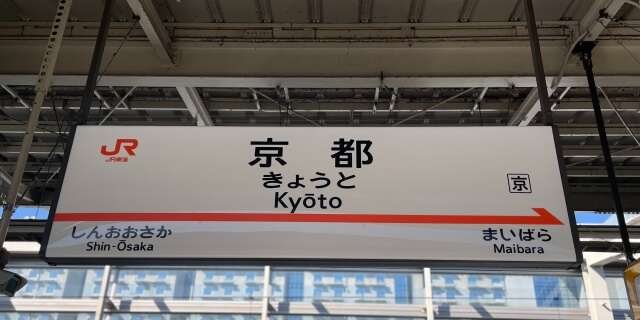
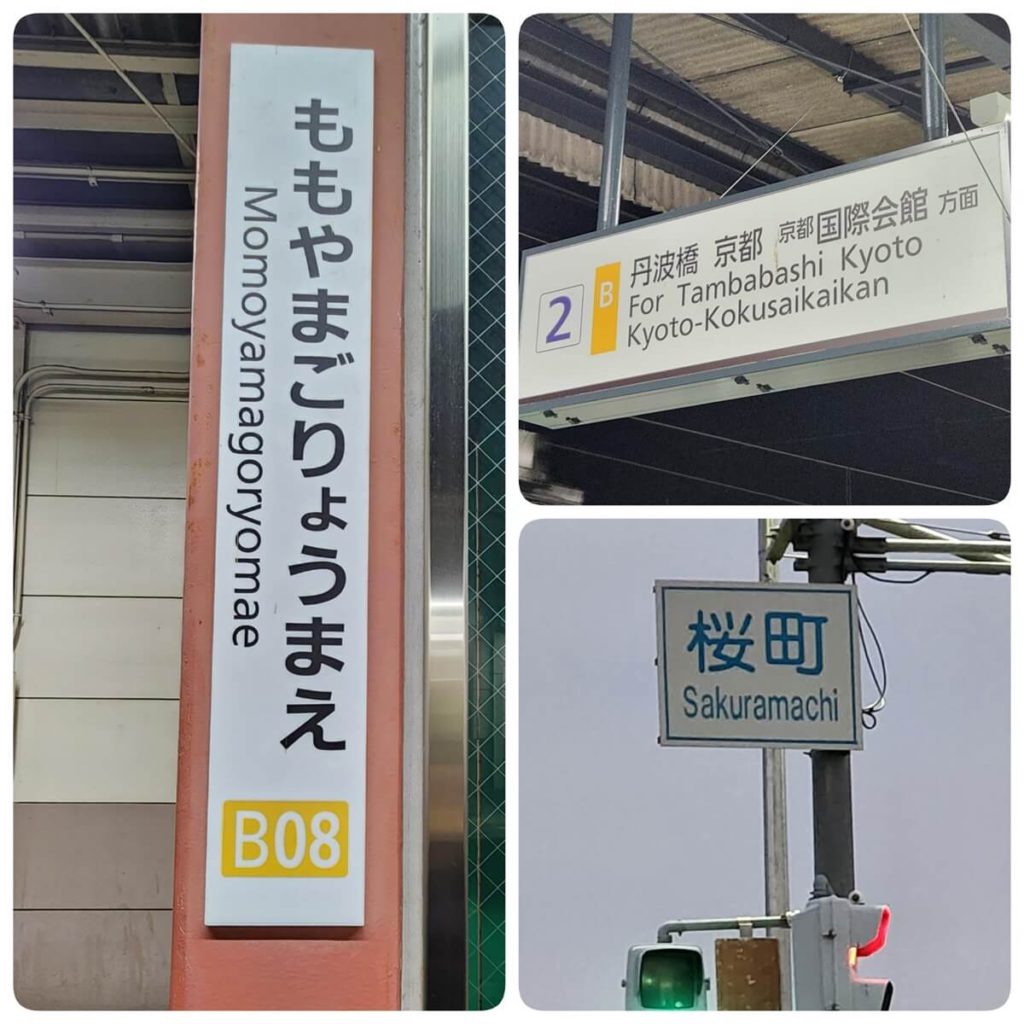
It is common for Japanese people to type Japanese sentences using rōmaji. With the spread of ICT education, many elementary school children now practice typing using rōmaji input practice software. So if you learn rōmaji and use it in typing, it will automatically turn into hiragana, katakana, or kanji.
a ri ga to u → ありがとう → 有難う
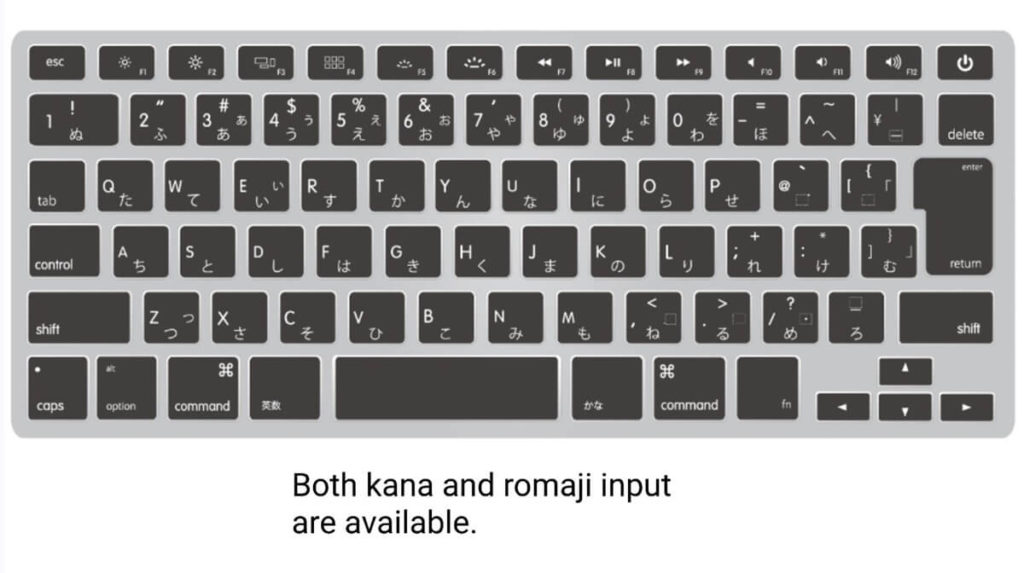
Here is the rōmaji chart.
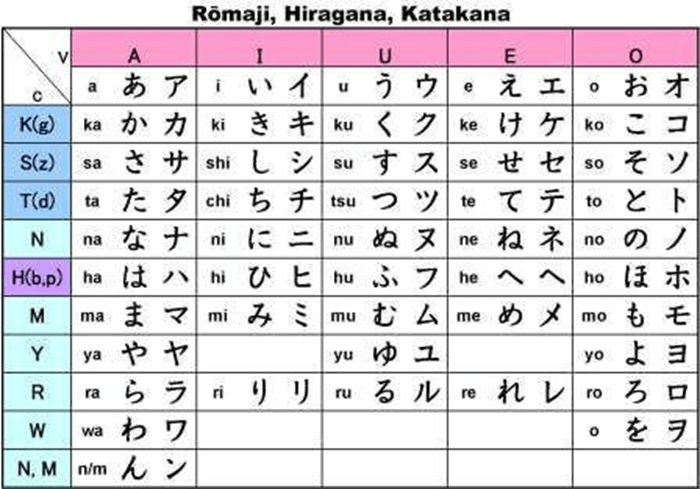
As you can see in the chart, Japanese sounds are based on 5 vowels (a, i, u, e, o) and 14 consonants. Aside from the individual vowels and the consonant ん (n), every letter is a “consonant + vowel” combination.
Because of this rule, you may notice a peculiar sound when Japanese people speak English. For example, words such as “dog” and “cat” end with a consonant. However, when Japanese people say these words, you might hear something like “dogu” or “cato.” Another good example is “strong.” It has only one syllable in English. However, Japanese people pronounce it as if there are five syllables.
strong → su to ro n gu (ストロング)
Rōmaji can be useful for those learning Japanese but don’t rely on it too much. Loanwords are written in katakana, but their pronunciation and intonation often differ significantly from the original sounds. English emphasizes stress within words, whereas Japanese assigns equal weight to each syllable, leading to a more even rhythm. This difference contributes to English sounding more rhythmic, while Japanese may seem more monotone.
calendar → (rōmaji input) → ka re n daー → カレンダー
chocolate → (rōmaji input) → cho ko reー to → チョコレート
Conclusion
Students in elementary school are supposed to learn 1026 kanji through 6 years. They work hard on them every day as homework. As they learn more kanji, their world expands. By learning kanji, they come to understand the deeper meaning of words they have heard.
Learning a language is a life-long journey. There is no shortcut to mastering it. Let’s enjoy finding new ways to express ourselves. There’s no better way to learn a language than to have fun.
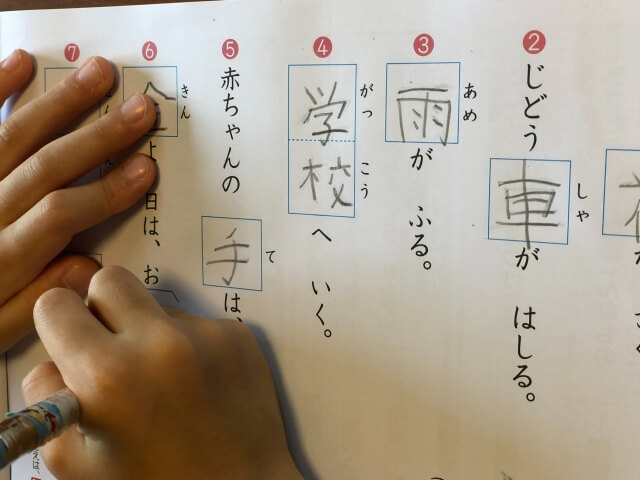
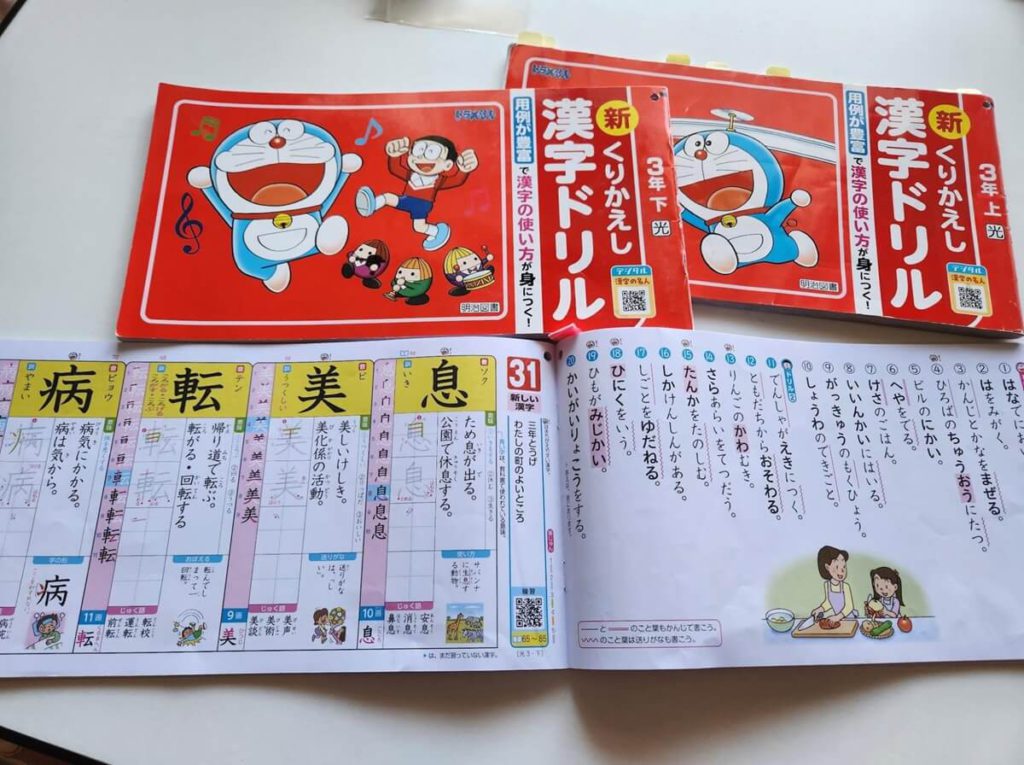
Lives in Takatsuki city, Osaka. Has been engaged in English for work and fun for years.

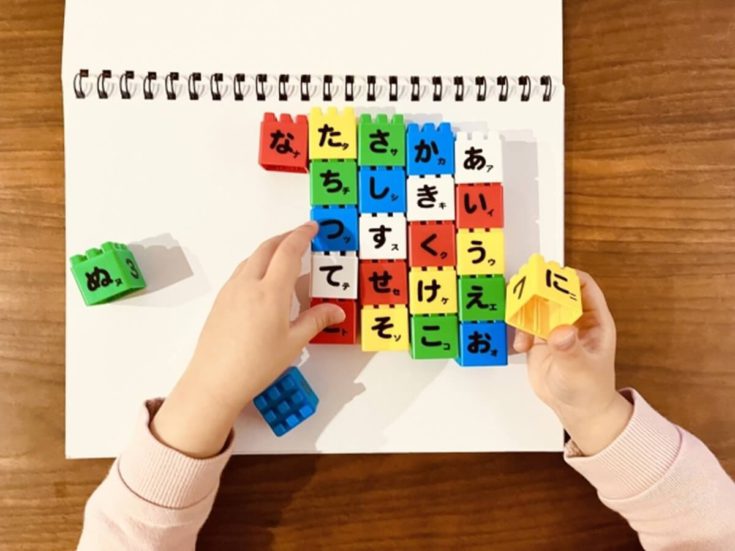
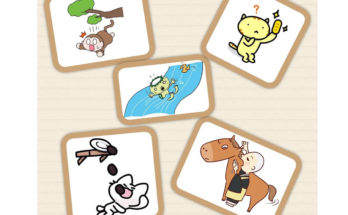
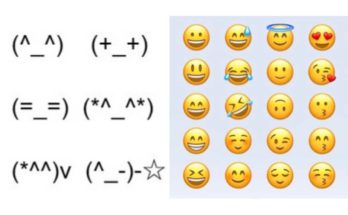
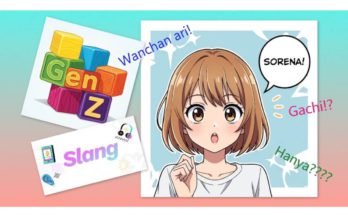
 HTJ has a YouTube page! Check it out
HTJ has a YouTube page! Check it out